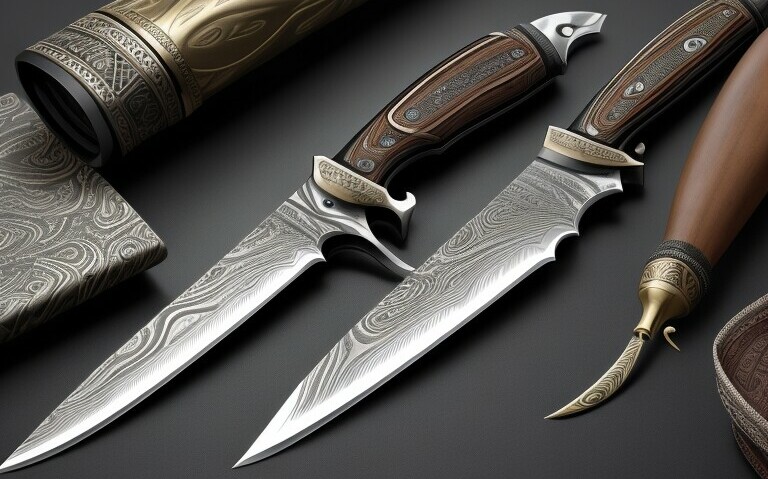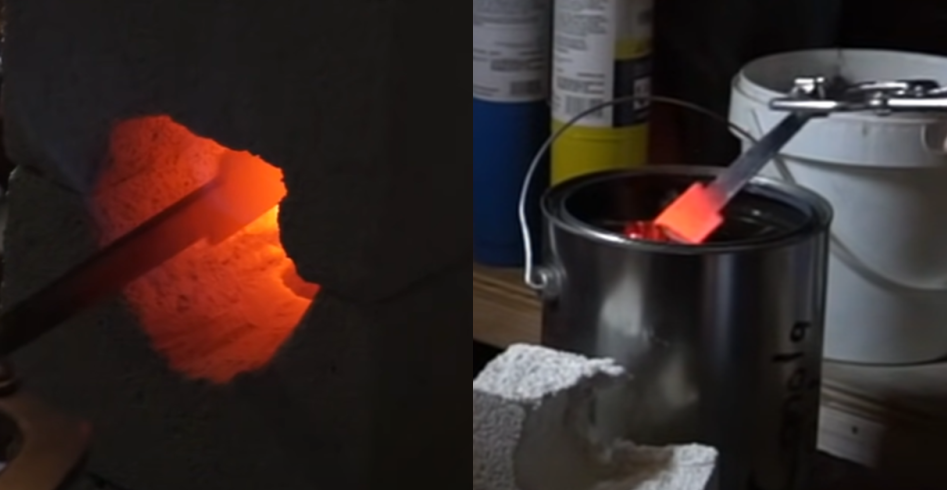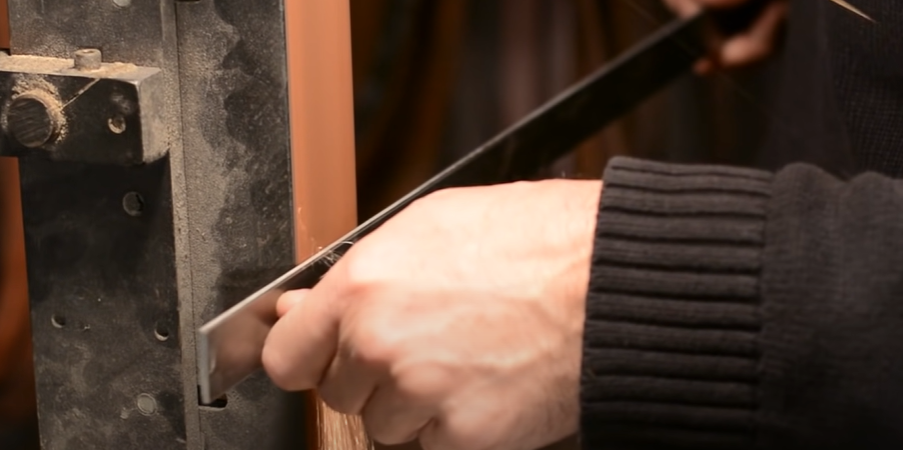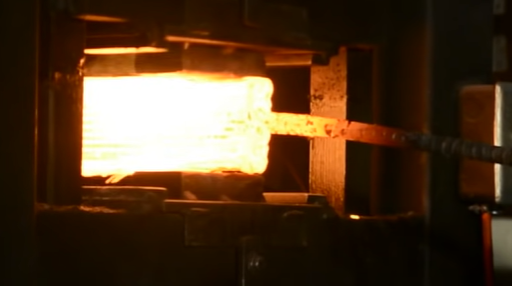The Damascus knife is famous for its sharpness and eye-catching patterns. However, the big question is whether it’s worth the money, especially considering its higher price compared to other knives. In this exploration, we’ll dive into whether investing in a Damascus knife is a smart move for you, ensuring it meets your needs and is worth the extra cost. Let’s figure out if this knife is truly a cut above the rest for what you’re looking for!
Table of Contents
What is Damascus Steel?

The history of Damascus steel is steeped in ancient craftsmanship and mystery. Originating from wootz steel in India around 300 BCE, it gained prominence through trade routes and reached legendary status during the Middle Ages in Damascus, Syria.
Damascus steel blades were crafted using a unique and closely guarded process of pattern welding, involving the repeated folding and layering of different steel alloys. These blades were celebrated for their exceptional sharpness, strength, and the intricate patterns that emerged during forging.
However, the decline of Damascus steel production occurred as the original techniques were lost over time. In the 19th century,
Europeans sought to replicate the steel’s patterns, leading to a modern revival using pattern welding techniques. While the exact methods of ancient Damascus steel remain elusive, today’s versions capture the aesthetic allure and functional qualities that made it legendary.
The history of Damascus steel reflects a journey from ancient metallurgical ingenuity to contemporary craftsmanship that continues to captivate enthusiasts and artisans alike.
How is Damascus Steel Knife Made?
Creating a Damascus knife is a journey that combines artistry and metallurgical skill. To embark on this venture, one must gather the essential tools and materials, with high-quality steel being the cornerstone. Below are the general steps:
Selecting Materials:
Choose high-carbon steel and nickel-based steel for the layers. The high-carbon steel provides sharpness, while nickel-based steel adds toughness and resistance to corrosion.
Preparing the Steel:
Cut the selected steel into long bars or strips. Clean and sand the steel to remove any rust or impurities.
Layering:
Arrange alternating layers of high-carbon and nickel-based steel. Stack these layers to form a billet. This billet will be the raw material for the Damascus steel.
Welding:
Heat the stacked layers until they are red hot. Forge weld the layers together by applying pressure and hammering. Repeat the process, creating a solid billet with well-bonded layers.
Drawing Out and Folding:

Heat the billet again and draw it out by elongating it. Fold the billet in half and forge weld it again. Repeat the folding process multiple times. This creates the distinctive layered pattern.
Shaping the Blade:
Once the desired layering is achieved, shape the billet into the rough outline of the knife blade. Pay attention to the design and dimensions of the knife.
Heat Treatment:

Heat the blade to a critical temperature and then quench it in oil or water to harden the steel. Temper the blade to reduce brittleness and achieve the right balance of hardness and toughness.
Grinding and Polishing:
Grind the blade to the desired shape, thickness, and edge geometry. Polish the blade to enhance its aesthetic appeal and reveal the pattern.
Handle Attachment:
Choose a suitable handle material, such as wood, bone, or synthetic materials. Attach the handle securely to the tang of the knife.
Final Touches:
Sharpen the blade to achieve a razor-sharp edge. Etch the blade in an acid solution to highlight the Damascus pattern.
Final Inspection:
Inspect the knife for any imperfections or issues. Make any final adjustments to ensure the knife meets quality standards.
Optional: Surface Treatments:
Apply surface treatments like bluing or coating for added protection and aesthetics.
While this process outlines the traditional method, some modern variations may involve additional steps or the use of power tools for efficiency.
Why Are Damascus Steel Knives Expensive?
The allure of Damascus steel comes at a price, and several factors contribute to the high cost:
Craftsmanship:
Crafting Damascus knives requires a high level of skill and craftsmanship. The process of layering and forging multiple types of steel to create intricate patterns is labor-intensive and demands expertise. This adds complexity to the manufacturing process and it is time consuming. All of which contribute to the overall cost.
Layer Count and Price:
The layer count significantly influences the price of the knife. More layers require more folding and work, resulting in a higher price point. For example, a knife with 45 layers may be priced under a thousand dollars, while knives with 5,000 layers can take a month to complete and cost significantly more.
Techniques and Machinery:
Techniques like twist Damascus involve specific twisting methods to create star-like patterns. Specialized machinery, including a large power hammer, is crucial for quality Damascus knife production. The entire process involves significant investment, with specialized machinery costing at least one hundred thousand dollars.
Material Quality:
Damascus knives are often made from high-quality, high-carbon steel. The choice of premium materials enhances the knife’s strength, sharpness, and overall performance, but it also increases production costs.
Uniqueness:
Each Damascus steel knife is essentially a work of art. The individual patterns created during the forging process make each knife unique, adding to its intrinsic value.
Limited Production:
The intricate nature of crafting Damascus knives, combined with the skill required, limits the production capacity. Limited availability and the exclusivity of these knives contribute to their higher price.
Advantages and Disadvantages of Damascus Steel Knives
Advantages:
Exceptional Sharpness:
Damascus steel knives are renowned for their razor-sharp edges, making them ideal for precision cutting.
Distinctive Aesthetics:
The mesmerizing patterns on Damascus blades make these knives a visual delight, appealing to those who appreciate craftsmanship.
Durability:
Properly crafted Damascus knives can be exceptionally durable, thanks to the combination of high-carbon steel and meticulous heat treatment.
Disadvantages:
Cost:
The primary drawback is the high cost associated with Damascus steel knives, placing them out of reach for some enthusiasts.
Complex Maintenance:
Damascus steel requires careful maintenance to prevent corrosion and damage. Regular sharpening is also necessary to retain the blade’s edge.
Potential for Imitations:
Due to the popularity of Damascus steel, some knives on the market may claim to be genuine but are, in fact, imitations.
Is Damascus Steel Knife Worth It?
Determining the value of a Damascus steel knife is a subjective decision, contingent upon individual preferences, needs, and budget constraints. Here are some key considerations:
For Collectors and Enthusiasts:
If one values the exquisite artistry, unique craftsmanship, and historical allure of Damascus steel, the investment can be justified. Many collectors treasure these knives as prized possessions, appreciating the artistry that goes into their creation.
Professional Chefs:
Damascus steel knives are often preferred by professional chefs due to their sharp edges and exceptional durability. The precision they offer can significantly enhance the cooking experience, making them a worthwhile investment for those in the culinary field.
Budget Constraints:
Individuals on a tight budget might find the high cost of Damascus steel to be a deterrent. In such cases, there are alternative high-quality knife options available at more affordable prices, ensuring that quality does not compromise fiscal responsibility.
Balancing Performance and Cost:
Consider your specific needs when evaluating the necessity of Damascus steel. While it undeniably delivers exceptional performance, it may not be essential for every kitchen task. A well-maintained, mid-range knife can admirably serve various culinary requirements without the associated premium cost.
Traditional vs Modern manufacturing process of steel:
The traditional “Drawing Out and Folding” process in Damascus steel production serves the purpose of achieving an even distribution of alloys or elements among the layers, enhancing mechanical properties like strength and toughness. The process is labor-intensive, contributing to higher costs.
However, in contemporary manufacturing, this historical method is not obligatory for producing high-quality steel. Modern steel production methods, characterized by precise composition control and advanced metallurgical processes, have largely replaced manual drawing out and folding.
For enthusiasts on a budget who appreciate the aesthetics of the Damascus pattern, a Damascus steel knife can be a worthwhile addition. However, for those seeking an economical yet high-performance knife, alternatives like carbon steel or high-carbon steel knives may be more suitable. It’s essential to weigh the unique characteristics of Damascus steel against practical considerations and budget constraints to make an informed decision.
How to Choose a Good Quality Damascus Steel Knife
While the allure of Damascus steel is undeniable, it’s crucial to navigate the market judiciously to ensure you’re investing in a high-quality blade. The popularity of Damascus steel has led to the proliferation of imitations and poorly crafted knives. Some blades are cheaply made, employing simple layered steel or even flattened steel cables, with patterns created through etching rather than the authentic forging process. To distinguish a good quality Damascus steel knife, consider the following factors:
Craftsmanship:
Genuine Damascus steel involves a meticulous forging process that creates the unique patterns naturally. Look for knives crafted by skilled artisans who follow traditional techniques.
Material Transparency:
Reputable manufacturers disclose the types of steel used in their blades. High-quality Damascus steel often combines different alloys to achieve the desired balance of hardness and durability.
Pattern Consistency:
Authentic Damascus steel exhibits a consistent pattern throughout the blade. Be wary of knives with irregular or overly uniform patterns, as they may indicate a less genuine manufacturing process.
Edge Retention:
Damascus steel is prized for its sharpness. A good quality knife should maintain its edge well over time. Look for reviews or product descriptions that emphasize edge retention.
Brand Reputation:
Established brands with a history of producing quality knives are more likely to deliver an authentic Damascus steel experience. Research and consider customer reviews to gauge a brand’s reputation.
Price Consideration:
While high-quality Damascus steel comes at a cost, excessively low prices may be a red flag. Be cautious of knives that seem too good to be true, as they may be made from inferior materials.
By paying attention to these factors, you can make an informed decision and ensure that the Damascus steel knife you choose is a genuine, well-crafted piece that lives up to the reputation of this ancient and revered steel.
The video below is about how to identify a fake damascus knife, but this could be done after you bought the knife. Hope it helps you.
Conclusion
Damascus steel knives are not just tools; they are expressions of art and craftsmanship. If the allure of a visually stunning, razor-sharp knife resonates with you, and you’re willing to invest in a piece of culinary history, then a Damascus steel knife is worth every penny.






